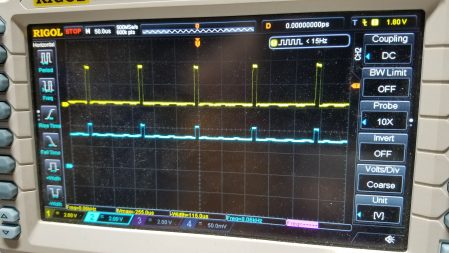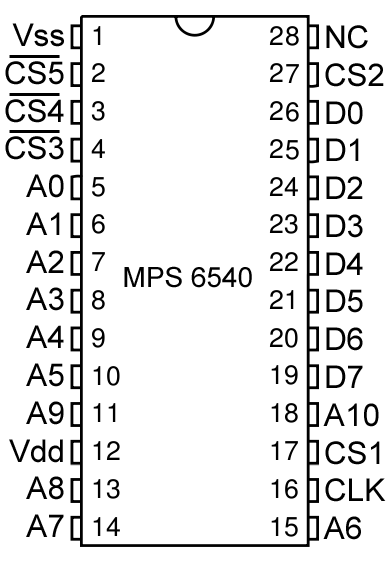While dumping random ROMs and proms in an effort to identify boards Frank and I came across something interesting. We found two color PROMs that were not able to be identified by MAME, but are very VERY similar to some already in MAME. The color PROMs in question seem like the one used in Astrofighter but with minor differences. We ran the game with the different color PROM and in emulation we couldn’t tell the difference so Frank whipped up this script to generate a palette based on the PROM information. What this does is evaluate the information in the PROM to determine what color is displayed based on the analog mixing on the output, and the data bus going into the PROM. First, let’s generate a palette based on the PROM in MAME:

Original Palette
This shows a decent variety of colors, but that alone doesn’t tell us much. Let’s look at it against the ones we dumped (there were two identical ones, as well as one original so the dumper isn’t in question here)

Different palette
Here we can see that the orange color is replaced with red and dark red. That seems to be the only difference between these. In the game that orange color is only responsible for some of the colorful twinkling stars in the background so it’s unlikely that anyone would notice the difference. Maybe that color is used by an enemy later on, but in playing the game we haven’t come upon any yet. The technical difference is that at address 0x09 and 0x19 in the MAME version of the rom the value is 0x07, while in the one we found it’s 0x01. That’s a two bit difference in data at only two addresses. I can’t think of a way for two chips to be broken in the same way as to give this sort of a result, so I’m left thinking it’s just a minor variation on the released PROM. Perhaps a different game uses the same PROM and it makes a bigger difference there, but not in Astrofighter.
We did find another, more different, PROM and run it through the same palette generator script and came up with this:

very different palette
This one only has the first half of the PROM populated with data. Here I DO suspect hardware damage to the PROM, something about accessing the top address bit caused no output on the data bus whatsoever. This one seems a clear case of failed hardware. That being said, while 0x19 has data 0x00, like all the upper bytes…. 0x09 has 0x01 just like the other PROMs we found to be different than the one in MAME. It seems that before failing this was also deviating from what the known Astrofighter PROM was supposed to be.
Is the slight variation on the star background worth archiving in MAME as a different ROM set? We don’t even have positive confirmation what game this PROM came from, just strong speculation based on what you can see above.







